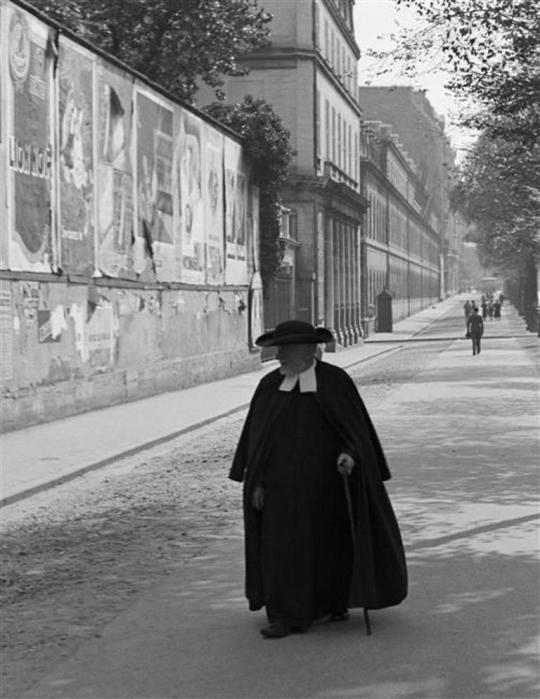#boulevard des invalides
Text
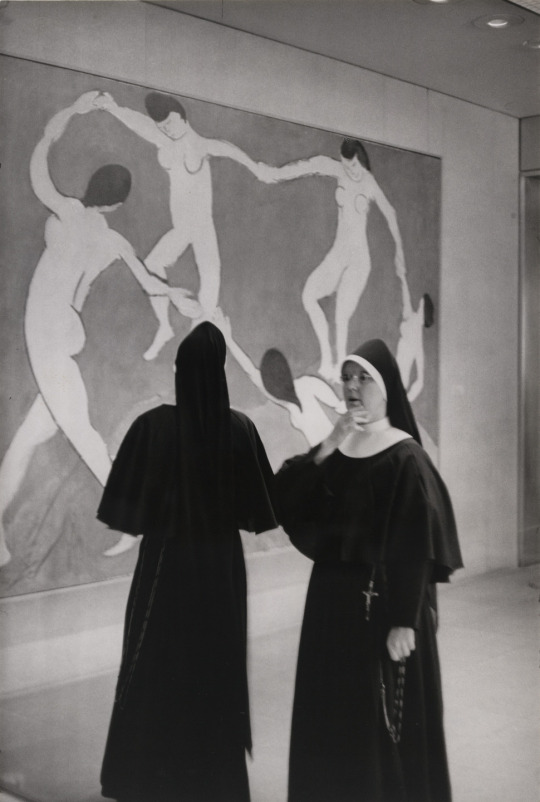
Henri Cartier-Bresson
The Museum of Modern Art, New York
1964
Minneapolis Institute of Art collection
©Henri Cartier-Bresson/Magnum Photos
#henri cartier bresson#french art#photographer#matisse#henri matisse#photography#cartier bresson#museum#nuns#museum of modern art#moma#dance#paris#boulevard des invalides#1909#french photographer#french photography#modern art
587 notes
·
View notes
Text

Le Recrutement, Cafe, Paris France: Le Recrutement, Cafe is a Brasserie Parisienne known for Traditional French cuisine. It is located on Boulevard de la Tour Maubourg, Paris France in 7th arrondissement of Paris. The iconic Eiffel Tower and its Champs de Mars park lie in this genteel district. The area draws tourists to cultural landmarks that include the Musée d'Orsay and its Impressionist art collection, the Musée Rodin with its sculpture garden, and Les Invalides armoury museum, home to Napoleon's Tomb. Foodies flock to the vibrant cafes, restaurants and gourmet shops on Rue Cler and around Le Bon Marché department store.
73 notes
·
View notes
Text

Boulevard des Invalides, Paris, 1926. André Kertész. Gelatin silver print.
#andré kertész#photography#black and white#1920s#paris#vintage#fotografia#fotografie#photographie#foto#street scene#typography
38 notes
·
View notes
Text

Catherine Deneuve buying newspapers at a kiosk during a break on the set of a scene from the film ‘Manon 70’by Jean Aurel at the boulevard des Invalides in Paris, 1967. Photo by Francois Gragnon®💐💐💐
Via @isabelfutre on Instagram💐
6 notes
·
View notes
Text

Tankiste Loadout Display
Shown here is the Great War French Tank Crewman loadout displayed in its entirety. This display photo includes both regulation items as well as common items a Veteran tankiste would reasonably have within the time frame of 1918. With the completion of this writeup I hope you have gained newfound knowledge and respect for the soldiers of the Artillerie Spéciale who did not have the privilege we have to wear their uniform in a purely educational and peaceful capacity. While reenacting does not give us the attached, constant, and profound social impact necessary to truly understand the citizen soldier's feelings of the time, what we can do as preservers of history is get as close as possible to this feeling through authenticity. Part of this is, of course, performed through understanding the history of their uniform and the 'why' behind its appearance. It is especially important in regards to the AS as their uniform would be developed at the frontline by the soldiers themselves. Thus, wearing the uniform as a reenactor provides greater insight into why the soldiers modified their kit more than any time period photo could. By far the best part of the hobby is reading a memoir or account of a tankiste complaining about a certain aspect of the uniform, and wearing the uniform and agreeing with their complaint 100 years later.
It honestly feels very cathartic to be at a stopping point in this impression that I feel is sufficient enough to both respect and teach the history of the AS with others. This kit is the product of years of pure research, long nights translating French documents, the stress of historical auctions, trial and error, dumb luck, consultation with experts in the field, and general all around effort in finding the right things to acquire. As a reenactor who specializes in the French tank corps of the Great War, I am glad to have shared this interest with you. Well until next time!
♠ ♥ ♦ ♣
I believe it would be appropriate to end this deep dive into AS history with the words of General Estienne and his thoughts on the American Tank Corps from the May 1921 letter:
"General Estienne (who organized the Tank-Corps)
Inspector of the Tank-Corps
4 bis Boulevard des Invalides. Paris 26th - May 1921 -
"Madamoiselle;
I am much pleased to give you my view as a soldier of what we owe to the American help. Without this help, I don't believe Marichal Foch would have been able to effect the wonderful manoeuvre by which, in 4 months, he forced the enemy to a capitulation, unequalled since that of Carthage. From a personal point of view, as commander of an artillery attack in Lorraine, I have witnessed the action of the American Tank Corps together with our little Renault Tanks. Having witnessed their incomparable bravery, I am grateful for a renewed opportunity to express the affectionate admiration which the French Tank-Corps conceived on the Battle-Field for their American comrades continuing this same feeling in time of peace. With the expression of my respect, I am, Mademoiselle, etc. -"
#history#tanks#renault ft#technology#world war one#reenactor#uniforms#reenacting#reenactment#reenactors
4 notes
·
View notes
Text
MRJ Serrurerie: Des Services de Serrurerie Proches de Chez Vous
Optimisez la Sécurité de Votre Domicile avec les Services d'un Serrurier à Paris
La sécurité de votre domicile à Paris est une priorité absolue, et c'est là que nous intervenons. En tant que serruriers experts, nous offrons une gamme complète de services pour répondre à vos besoins en matière de sécurité. Que vous résidiez près de la place de la République, dans le 7e arrondissement, ou dans le quartier du Louvre (75001) ou de Montorgueil (75002), notre équipe est là pour vous aider.

Réparation de Porte Blindée d'Appartement
La porte d'entrée de votre appartement est votre première ligne de défense contre les intrus. Si votre Réparation de porte blindée d'appartement nécessite des réparations, il est crucial de faire appel à des professionnels qualifiés pour garantir sa résistance et votre sécurité. Nous sommes spécialisés dans la réparation de portes blindées d'appartement, assurant ainsi la protection optimale de votre domicile.
Serrure Yale LINUS et Serrure Connectée
Pour renforcer la sécurité de votre domicile, nous proposons l'installation de serrures Yale LINUS et de yale serrure connectée. Ces systèmes de verrouillage avancés offrent une protection supplémentaire grâce à leur technologie de pointe. Nos serruriers expérimentés peuvent vous conseiller sur le meilleur choix de serrure en fonction de vos besoins spécifiques.
Intervention Rapide et Efficace
Que vous ayez besoin d'un serrurier près de la place de la République, dans le 7e arrondissement, ou dans tout autre quartier de Paris, notre équipe est dis Serrurerie Paris 75002 ponible pour intervenir rapidement. Nous comprenons l'urgence des situations de sécurité et nous nous engageons à fournir des services rapides et efficaces à tous nos clients.

Serrurier Paris 6
Situé au cœur de Paris, Serrurier Paris 6 est réputé pour son charme historique et ses rues pittoresques. Si vous avez besoin des services d'un serrurier dans cette zone, notre équipe est là pour vous aider. Que ce soit pour des réparations, des remplacements de serrures ou des installations de systèmes de sécurité avancés, nous sommes là pour vous offrir des solutions efficaces et fiables.
Serrurerie Paris 75007
Serrurerie Paris 75007 de Paris est célèbre pour ses monuments emblématiques tels que la Tour Eiffel et les Invalides. Si vous résidez dans cette zone et que vous avez besoin d'un serrurier professionnel, ne cherchez pas plus loin. Notre serrurerie propose une gamme complète de services pour sécuriser votre domicile ou votre entreprise, garantissant votre tranquillité d'esprit.
Serrurerie Paris 75006
Serrurerie Paris 75006 de Paris regorge de boutiques élégantes, de cafés charmants et d'une atmosphère artistique unique. Si vous rencontrez des problèmes de serrurerie dans cette région, notre équipe expérimentée est prête à intervenir rapidement. Nous comprenons l'importance de la sécurité de votre propriété et nous nous engageons à fournir des solutions rapides et efficaces à tous vos besoins en serrurerie.
Serrurerie Paris 75009
Serrurerie Paris 75009 de Paris est animé par une scène culturelle dynamique et abrite des attractions telles que l'Opéra Garnier et les Grands Boulevards. Si vous avez des problèmes de serrurerie dans cette région, notre serrurerie est là pour vous offrir une assistance professionnelle. Que ce soit pour des services d'urgence ou des projets de sécurité à long terme, nous sommes à votre disposition pour répondre à tous vos besoins en serrurerie.

Serrurerie Paris 75014
Serrurerie Paris 75014 arrondissement de Paris est réputé pour son ambiance villageoise et ses charmants quartiers. Si vous avez besoin des services d'un serrurier dans cette zone, notre équipe qualifiée est là pour vous aider. Nous comprenons l'importance de la tranquillité d'esprit et nous nous engageons à fournir des solutions de serrurerie de haute qualité pour protéger votre domicile ou votre entreprise.
Quel que soit votre emplacement à Paris, notre serrurerie est votre partenaire de confiance pour tous vos besoins en serrurerie. Contactez-nous dès aujourd'hui pour bénéficier d'un service professionnel et fiable!
Serrurier Paris 9 : Votre Expert en Sécurité dans le 9e Arrondissement
Vous recherchez un serrurier de confiance dans Serrurier Paris 9 de Paris ? Ne cherchez pas plus loin ! Notre équipe de serruriers expérimentés est là pour répondre à tous vos besoins en matière de sécurité. Que vous ayez besoin d'une installation de serrure, d'une réparation ou d'un dépannage d'urgence, nous sommes là pour vous aider. Avec notre expertise et notre service client de qualité, vous pouvez avoir l'esprit tranquille en sachant que votre sécurité est entre de bonnes mains.
Serrurerie Paris : Des Services de Qualité pour Tous vos Besoins en Serrurerie
Besoin d'un service de serrurerie paris ? Notre serrurerie offre une gamme complète de services pour répondre à tous vos besoins en matière de sécurité. Que ce soit pour l'installation de nouvelles serrures, la réparation des serrures de porte d'entrée ou l'assistance en cas d'urgence, notre équipe de serruriers qualifiés est là pour vous aider. Faites confiance à notre expertise et à notre professionnalisme pour assurer la sécurité de votre domicile ou de votre entreprise.
Serrures Porte d'Entrée : Assurez la Sécurité de Votre Foyer avec des Serrures de Qualité
Les serrures porte d'entrée jouent un rôle crucial dans la sécurité de votre domicile. Si vous recherchez des serrures de qualité pour renforcer la sécurité de votre foyer, ne cherchez pas plus loin. Notre serrurerie propose une sélection de serrures haut de gamme pour répondre à vos besoins spécifiques. Nos serruriers expérimentés peuvent vous conseiller sur les meilleures options disponibles et assurer une installation professionnelle pour une tranquillité d'esprit totale.

Serrurerie Paris 75003, 75004, 75005, 75008 : Des Services de Serrurerie Proches de Chez Vous
Besoin d'un serrurier dans les quartiers parisiens 75003, 75004, 75005 ou 75008 ? Notre serrurerie est là pour vous servir ! Avec notre emplacement central et notre équipe de serruriers mobiles, nous pouvons intervenir rapidement pour répondre à vos besoins en matière de sécurité. Que ce soit pour une urgence ou pour des services planifiés, vous pouvez compter sur notre professionnalisme et notre réactivité pour assurer la sécurité de votre domicile ou de votre entreprise.
Serrurerie Paris 75010
À la recherche d'un serrurier professionnel dans le 10e arrondissement de Paris ? Ne cherchez plus ! Notre entreprise de serrurerie basée à Serrurerie Paris 75010 propose des services de qualité pour répondre à tous vos besoins en matière de serrurerie. Que vous ayez besoin d'une installation, d'une réparation ou d'un dépannage, notre équipe de serruriers expérimentés est là pour vous aider. Nous sommes fiers de notre réputation de professionnalisme et de fiabilité, et nous nous engageons à fournir des services de serrurerie exceptionnels à nos clients du 10e arrondissement de Paris et des environs. Faites appel à notre entreprise de serrurerie à Paris 75010 pour des services rapides, efficaces et fiables !
Serrurerie Paris 75011
Besoin d'un serrurier de confiance dans le 11e arrondissement de Paris ? Notre entreprise de Serrurerie Paris 75011 est à votre service ! Nous proposons une gamme complète de services de serrurerie, de l'installation à la réparation en passant par le dépannage. Nos serruriers qualifiés et expérimentés sont disponibles pour répondre à tous vos besoins en matière de serrurerie, que ce soit pour votre domicile ou votre entreprise. Faites confiance à notre entreprise de serrurerie à Paris 75011 pour des services professionnels et fiables !
Serrurerie Paris 75012
Vous cherchez un serrurier compétent dans le 12e arrondissement de Paris ? Ne cherchez plus ! Notre entreprise de serrurerie à Paris 75012 propose des services de haute qualité pour tous vos besoins en matière de serrurerie. Que vous ayez besoin d'une nouvelle installation, d'une réparation ou d'un dépannage, notre équipe de serruriers expérimentés est là pour vous aider. Nous sommes fiers de notre réputation de professionnalisme et de fiabilité, et nous nous engageons à fournir des services exceptionnels à nos clients du 12e arrondissement de Paris et des environs. Contactez notre entreprise de serrurerie à Paris 75012 dès aujourd'hui pour des services rapides, efficaces et fiables !
Serrurerie Paris 75013
Besoin d'un serrurier professionnel dans le 13e arrondissement de Paris ? Notre entreprise de Serrurerie Paris 75013 est à votre service ! Nous proposons une large gamme de services de serrurerie, de l'installation à la réparation en passant par le dépannage. Nos serruriers qualifiés et expérimentés sont là pour répondre à tous vos besoins en matière de serrurerie, que ce soit pour votre domicile ou votre entreprise. Faites confiance à notre entreprise de serrurerie à Paris 75013 pour des services professionnels et fiables !
Serrurerie Paris 75018 : Votre Expert en Sécurité dans le 18e Arrondissement
À la recherche d'une serrurerie de confiance dans le 18e arrondissement de Paris? Ne cherchez pas plus loin! Notre équipe de serruriers qualifiés à Serrurerie Paris 75018 est là pour répondre à tous vos besoins en matière de sécurité. Que vous ayez besoin de changer vos serrures, d'installer un système de sécurité avancé ou de dépanner une urgence, nous sommes là pour vous aider. Faites confiance à notre expertise et à notre engagement envers la sécurité de votre domicile ou de votre entreprise dans le 18e arrondissement de Paris. Contactez-nous dès aujourd'hui pour des services professionnels et fiables de serrurerie.
Serrurerie Paris 75019 : Votre Sécurité, Notre Priorité dans le 19e Arrondissement
La sécurité de votre domicile ou de votre entreprise dans le 19e arrondissement de Paris est primordiale, et chez Serrurerie Paris 75019, nous en faisons notre priorité. Nos serruriers expérimentés sont disponibles pour vous fournir des services de qualité, que ce soit pour l'installation de nouvelles serrures, la réparation de serrures endommagées ou l'amélioration de la sécurité de votre propriété. Faites appel à notre équipe professionnelle pour des solutions de sécurité efficaces et adaptées à vos besoins spécifiques dans le 19e arrondissement de Paris.
Serrurier : Votre Solution de Sécurité Polyvalente
Un problème de serrurerie nécessite une solution rapide et fiable, et chez Serrurier, nous avons la réponse à tous vos besoins en matière de sécurité. Nos serruriers qualifiés sont équipés pour gérer une variété de situations, des urgences de serrurerie aux projets d'installation complexes. Faites confiance à notre expertise et à notre engagement envers votre sécurité, quel que soit le problème que vous rencontrez.

Serrurier Paris 2 : Des Services de Serrurerie de Confiance dans le 2e Arrondissement
Besoin d'un serrurier dans le 2e arrondissement de Paris? Serrurier Paris 2 est là pour vous aider. Notre équipe de serruriers qualifiés est disponible pour répondre à tous vos besoins en matière de sécurité, que ce soit pour des réparations, des installations ou des conseils en sécurité. Avec notre engagement envers la satisfaction du client et notre expertise en serrurerie, vous pouvez compter sur nous pour des services fiables et professionnels dans Serrurier Paris 2.
Serrurier Paris 3 : Votre Partenaire de Confiance en Sécurité dans le 3e Arrondissement
La sécurité de votre domicile ou de votre entreprise dans le 3e arrondissement de Paris est notre priorité chez Serrurier Paris 3. Nos serruriers expérimentés sont disponibles pour fournir des services de qualité, que ce soit pour des réparations d'urgence, des installations de serrures ou des conseils en sécurité. Faites confiance à notre équipe professionnelle pour assurer la sécurité de votre propriété dans le 3e arrondissement de Paris.
0 notes
Text
PARIS BUS TOUR PT.1 TOUR EIFFEL, LOUVRE, NOTRE-DAME FRANCE, 🇫🇷 | MY WALK 2023 (4K) #71
📍BIG BUS TOUR in PARIS, PARIS BRIDGES, MUSEUMS, TROCADÉRO, EIFFEL TOWER, LES INVALIDES, CHAMPS-ELYSÉES, MADELEINE, BOULEVARD DES CAPUCINES, L’OPERA GARNIER, LOUVRE MUSEUM and NOTRE-DAME CATHEDRAL.
🇧🇷(PT-BR) TOUR DO BUSÃO DO BIG BUS em PARIS, PONTES DE PARIS, MUSEUS, TROCADÉRO, TORRE EIFFEL, OS INVÁLIDOS, CAMPOS ELÍSIOS, MADELEINE, BOULEVARD DES CAPUCINES, OPERA GARNIER DE PARIS, MUSEU DO LOUVRE E…

View On WordPress
0 notes
Text
Garbage Strikes

Not to be on some 'Let Them Eat Cake' bullshit but I'm about to be on my 'Let Them Eat Cake' bullshit.
I don’t use the metro, and I no longer wander the neighborhoods of Paris so I don’t know what’s happening outside of my bubble. When I was at dinner last week there was talk about the strikes, but we didn’t use the metro so we just shrugged it off. “That’s Paris”.
Strikes are normal. Everyone who has lived in Paris knows. In 2020 the metro was closed for like a month (right before Covid). If you lived here in 2016? That was probably the worst of it in my Paris history. The World Cup or the Championships were in town and those garbage workers said “fuck ya’ll, we’re going to make you look bad” and others did the same. At the time I lived at the bottom of Luxembourg and everyday boulevard Montparnasse was shut down for protests (manifestations). I stopped paying attention to who was protesting each day but it usually involves CGT.
The city drove in huge barricades on wheels (over 12ft) like everyday at 2pm and set them up on Avenue de l’Observatoire, where the 6th and the 5th turn into the 14th at Port Royale. The Gendarme lived on boulevard Montparnasse. It was constant. It wasn't nearly as destructive as Gilets Jeunes but one particular day was so bad they smashed all of the windows on the boulevard Montparnasse and burned down an LCL. That corner of Raspail was barren for like a year.
One thing I learned during that time? Certain neighborhoods are unaffected. The road to Invalides, where the Ministre Outre Mer is, got trashed one particular day. The area was deathly quiet after those protests. Wet from the water cannons, no cars were allowed. It was like the protestors had violated some unwritten law. Since then I’ve noticed they’ve not let protests happen in this area.

But back to 2016, when I learned that no matter how socialist Paris is, there are still the haves and have nots. Observatoire is a really beautiful street. I don't give Paris many compliments but the horse fountain in the summer is stunning. If you stand at one particular spot on the road outside Jardin Marco Polo all of the statues line up in such a way that it points to Luxembourg Palace with Sacre Couer looming above.
It is also a border street. It turns into, but also runs parallel, to boulevard Saint Michel, and avenue Georges Bernanos at weird angles, so despite my front door opening to it, I never knew which of the three roads in front of my building were considered which. One side of Saint Michel is the 6th and one side is the 5th. I lived on the 6th side of the street so when I walked on my side there was no trash. Garbage men came every night. But if you crossed the street? Piles and piles and dead rats.
From 2015-2018 I worked in Gros Caillou in the 7th, and lived there from 2016-2018. The area was in constant turmoil between strikes, the World Cup, the Champions League, and whatever period Macron and Fillon were in contention for the Presidency. Both of them lived in Gros Caillou (Macron on the ugly end of rue Cler and Fillion on square la Tour Maubourg, which is not a square), and it was chaos. But guess who always had trash pick up every night despite?
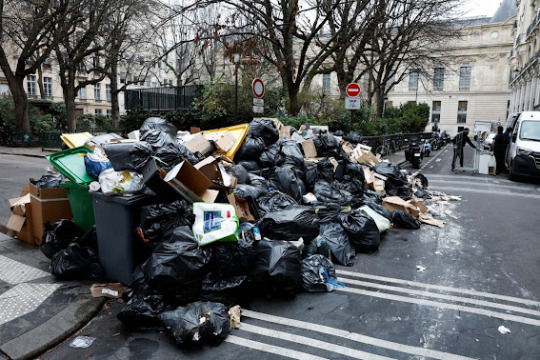
Which brings us to today. News of trash is everywhere. Photos of what looks like New York City is actually Paris. Last week was Fashion Week so they chose the right time to embarrass the city. But let’s be real, those celebs are not treking to Bercy. They’re staying in idolized Paris, where this stuff doesn’t happen.
For now my neighborhood is unaffected. Again. The trash men come right on time, every night between 7 and 8. I have since learned that we have Rachida Dati to thank for that. She has been Mairie of the 7th since 2008, and was politicking during those infamous 2016 strikes as well.
It turns out that Paris does not operate how I thought. I always assumed the Propreté ran and operated all of Paris (the 75, the 20 districts). Turns out that’s not how it works.
Thanks to Kitty Schrödinger on Twitter I learned of Rachida Dati. Cursory glance shows she serves looks, we stan, and worked under Sarkozy (do not stan). I looked at her tweets and learned she really hates Hidalgo (who doesn’t) and that she has vowed that she will always ensure the streets are clean even during strikes. That’s because the 7th is run by a private company called Derichbourg.
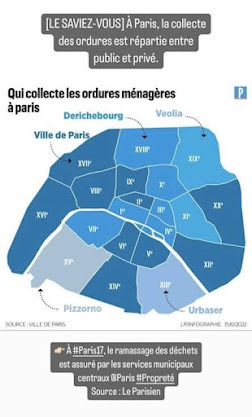
I really thought it was a government conspiracy because the 7th is home to some of the wealthiest people in Paris; the L’Oreal heir, the Louis Vuitton heir, the Estée Lauder heiress, those two old ladies who own that empty building near Champs de Mars, and the Qatar owned property on Quai d’Orsay which is an entire palace with a basketball hoop in the driveway. Money influences power, but perhaps not entirely in this case. Derichbourg is operating in the 1st, 4th, 3rd, 10th, and 18th, in addition to the 7th.
I know there are some pretty disgusting pockets of Paris (members of my women’s group are posting wild photos of particularly bad streets). But now I know a little more about the individual politics. Some districts are serviced by public workers, and some are serviced by private companies.
As I type this story the street cleaners are currently doing their daily cleanings outside my window. I’m still not sure how the Mairies are able to work independently of the city of Paris, but I’ll keep learning. I'm going to dig in a bit more into the politics of my area and the people who run it, but thanks Rachida Dati. The 7th stays proving why it is the best place to live.
**If you're in the 7th you can use this link to get the newsletter. A member of my women's group told me to do it, and she was right, it's easier than depending on socials. Habitants of other districts can find their Mairie's site and get the news too by signing up on their pages**
*Not originally published here.
0 notes
Photo

Mr. Loftie’s History of London
Till the appearance of Mr. Loftie’s History of London (2 vols. 1883), we had not a single scholarly history of our great city. But for more than two centuries there have been produced a long series of works on the topography and monuments of Paris. And we have now a splendid series of treatises issued by the Municipal Council, the Histoire Gfnirale de Paris, begun in 1865. When I was on the London County Council, I endeavoured to induce the Council to undertake a similar work for London; but I found that, with an annual expenditure of some two millions, the Municipality of London had no power to expend a penny on such an object.
With all this prodigious wealth of historic record beneath our feet as we tread over old Paris, how little do we think of any part of it, as we stroll about new Paris of to-day. We lounge along the boulevards, the quays and ‘places,’ with thoughts intent on galleries and gardens, theatres and shops, thinking as little of the past history of the ground we tread as a fly crawling over a picture by Raphael thinks of high art. Haussmann, and the galleries, the Boulevards, and the opera smother up the story of Paris, much as a fair with its booth, scaffoldings, and advertisements masks the old buildings round some mediaeval market-place. Ceci tuera cela, said Victor Hugo of the book and the Cathedral.
No ! it is not the book which has killed old Paris. It is Haussmann and his imitators, the architectural destroyers, restorers, and aesthetic Huns and Vandals. Not that we deny to Haussmannised Paris some delightful visions, many brilliant, some even beautiful effects. But to most foreign visitors, and perhaps to most modern Parisians, Haussmann has buried old Paris both actually and morally — hiding it behind a screen private guide turkey, disguising it with new imitation work, or dazzling the eye till it loses all sense of beauty in the old work.
Paris certainly imposes a strain on the imagination
The effort to recall old Paris when we stand in new Paris certainly imposes a strain on the imagination. When we stand on some bright morning in early summer in the Place de la Concorde whilst all is gaiety and life, children playing in the gardens, the fountains sparkling in the sun, and long vistas of white stone glistening in the light, with towers, spires, terraces, and bridges in long perspective, and the golden cross high over the dome of the Invalides, it is not easy to recall the aspect of the spot we stand on when it was soaked with the blood of the victims of the guillotine from King and Queen to Madame Roland and Charlotte Corday; we forget that every tower and terrace we look on has resounded to the roar of cannon and the shouts of battle, with fire and smoke, with all the forces of destruction and all the passions of hell — not once or twice but repeatedly for a century; nay, how the same scenes of carnage and of battle have raged through Revolution and Fronde, League and St. Bartholomew, and English wars and feudal faction fights back to the days of Counts of Paris, and Franks, Huns, Gauls, and Romans. And after all these storms, the city still smiles on us as a miracle of gaiety, brightness, industry, and culture, keeping some scar, or remnant, or sign of every tempest it has witnessed.
It has happened to us at times to stand on some beautiful coast on one of those lovely days which succeed a storm, when ripples dance along the blue and waveless sea, whilst the glassy water gently laps the pebbled beach, and yet but a few hours before we have seen that same coast lashed into foam, whilst wild billows swept into the abyss precious things and priceless lives of men. So I often think Paris looks in its brightness and calm a few short years after one of her convulsions; fulfilling her ancient motto —Jluctuat nec mergitur. Her bark rides upon every billow and does not sink. Fresh triumphs of industry and art and knowledge follow upon her wildest storm.
0 notes
Photo
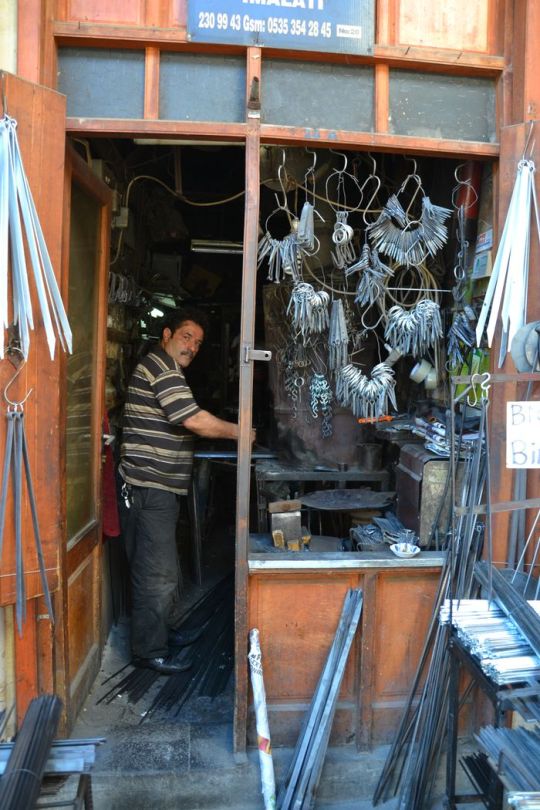
St. Germain is the abbey founded by Childebert
‘ St. Germain ’ means to an English ear aristocratic, magnificent, exclusive. But historically, St. Germain is the abbey founded by Childebert, the son of Clovis in 542, half a century before Augustine came to Canterbury. Its church was the burying-place of many kings of the first dynasty. The church that we see in the Boulevard St. Germain is of the eleventh and twelfth centuries; but it is said to contain some fragments of carving, capitals, and columns in the apse from the church of Childebert. The ancient, but probably not the original, tombs of the Mer- wings have been removed to St. Denis and to the Museums. Hugh Capet, the founder of the third dynasty, was Abbot of St. Germain. It was one of the greatest foundations in Christendom. We may read in the Histoire Ginirale a full account of it, with many illustrations at different times. It was one of the greatest centres of Benedictine learning. Mabillon, Monfaucon laboured there. They lie in the church with Descartes and Boileau.
The Abbaye, the prison of the Revolution, was part of the monastery, and was only removed in the third empire in my own memory. The famous Pri aux clercs, renowned in romance and memoir, in the drama and in art, where the gallants of the Renascence fought their duels, was the riverside meadow of the learned monks. What a world it is! Here is a church, the Westminster Abbey of the first Frank kings at a date when the Britons were fighting the heathen Saxons inch by inch—the home for twelve centuries of a mighty order and the central seat of their learning — the abbey of the mitred sovereign who gave his name to the dynasty of France, the home of modern French learning, — the scene of the duels of Henri II. and the massacres of September — now a poor maimed and restored fragment of Romanesque architecture, drowned in the torrential magnificence of a Napoleonic Boulevard, and giving its ancient name to the luxurious retreat of impotent bigotry.
Westminster Abbey of Paris
St. Denis is the true Westminster Abbey of Paris, the burying-place of so many kings since Dagobert. It commemorates Dionysius, a Christian martyr of the third century in the Decian persecution, called the first bishop of Paris. Dagobert, in the seventh century, built here a great basilica private tour istanbul; but in the twelfth century Suger made it one of the great cradles of pointed architecture. If we could see St. Denis as it existed down to the Revolution with all its tombs, its monuments, and its treasures intact, our own Abbey could hardly compare with it in historical interest.
Accustomed to the hallowed gloom of our own Abbey, we shudder at the new, scraped, gilt revivalism of St. Denis to-day. But though its treasures are scattered, and the bones torn from its desecrated graves, and the old glass is destroyed with the tombs, statues, carvings, and wood work, though the Viollet-le-Ducs have had their will upon the old church—yet the historical mind must recognise, when it has recovered its temper, that the church of the great Abbot Suger still presents to us a type with which few buildings of the Middle Ages can vie in historical memories.
He who will follow up the histories of these Abbeys,— of Ste. Genevibve, of St. Germain, St. Denis, St. Victor, the foundation of William of Champeaux, of the other St. Germain, opposite the Louvre, and St. Jacques de la Boucherie — who will study the history of the schools of Paris, so famous from the eleventh to the fourteenth centuries and the growth of the University, incorporated by St. Louis in the thirteenth century — will come to see how completely, during the Middle Ages, Paris was the intel-lectual centre of Catholicism, if Rome was its centre of government. And he who will watch all that goes on to-day in the quarter between Notre Dame and the Invalides will understand how deep are the roots of this organised Catholicism still — in spite of Voltaire, Rousseau, Revolution, and Commune.
0 notes
Photo

This Roman city
This Roman city, mainly on the island, but with annexes, north and south, on the mainland, according to the legend of St. Genevieve, repels the assault of Attila, is captured by Clovis at the end of the fifth century, and is made his capital. During the early monarchy, the island was the city, the home of the kings, the seat of the church, of government, and of justice, crowded with narrow streets and churches, and densely populated.
Gradually as the walls of Paris were extended in a series of circuits from the twelfth to the eighteenth century, the island city was eased of its close population, and at last in our own day was cleared altogether by gigantic sweeps of destruction and reconstruction. It once contained some 50,000 inhabitants, at least fifty or sixty streets, and more than twenty churches. To-day it has few private houses left, except at each end. As we said, the Citi consists of Cathedral, Palais de Justice, and Sainte Chapelle, Conciergerie and Prisons, Prefecture of Police, Chamber of Commerce, a huge hospital, a huge barrack, a flower market — vast places,’ gardens, quays, and Morgue. This is almost all that stands on the Paris of Julian, Clovis, and Hugh Capet.
Roman and Gallo-Roman circuit
It is a task full of historical teaching to trace the successive circuits and the walls of the city as it gradually grew. Each circuit represents an epoch in the history of France. First comes the old Roman and Gallo-Roman circuit — the Citi or island with some fortified post at the head of the North Bridge (PI. du Chatelet) and at the South Bridge (R. St. Jacques) extending on the South mainland as far as the Thermes with villas, theatres, cemeteries, and establishments outside the city circuit. The second circuit is that of Louis the Stout, the great restorer of the monarchy (1130), who built the Grand Chdtelet on the site of the Place du Chatelet, and the Petit Chatelet on the Quai St. Michel (left bank).
The third circuit is that of the great king Philip Augustus (1200), who built the Louvre, completed Notre Dame, and carried the walls North as far as St. Eustache, South as far as the Pantheon private tour istanbul, and included the smaller island, so that the original Citi was now but a sixth of the city. Next comes the fourth circuit, raised by Etienne Marcel in the middle of the fourteenth century, just after Poitiers during the great English War, who is duly commemorated by the fine equestrian statue beside the Hotel du Ville. Marcel laid the foundations of the Bastille, and repaired and strengthened rather than extended the circuit of Philip Augustus; and then the whole work was completed by Charles v. in the second half of the fourteenth century.
The fifth great circuit is that of Richelieu under Louis XIII. who carried the city walls Northwards as far as the existing inner Boulevards, and the R. Richelieu and its quarter is one of its additions; and Southwards it inclosed the whole district of the Luxembourg and its gardens to the Jardin des Plantes. The sixth great change came in the reign of Louis xiv. who conceiving himself invincible in France, if not in Europe, found fortifications in Paris needless and barbarous. Accordingly in his reign the old walls of Henry iv. and Richelieu were razed, and the Boulevards that we know were constructed as spacious avenues. On the site of the ancient Tour de Nesle, the Institute and the College Mazarin were built; the Louvre was completed and transformed into an Italian palace; the Tuileries were continued until they joined the Louvre; the Invalides and other great works were continued, and finally Paris received its character of an open modern city of Palladian architecture.
0 notes
Photo

Marseilles and Rouen
It has thus increased exactly three and one half times. There is nothing abnormal in this. London in the same time has grown quite fourfold, and a similar rate of increase has been seen in Berlin, Vienna, St. Petersburg, Lyons, Marseilles, and Rouen.
The increase of many English centres of industry, and of nearly all the American, has been vastly greater and more rapid. Still, the increase of Paris, within a hundred years, of three or four times in population and five or six times in area, is a sufficiently striking fact. In 1789 there were about one thousand streets: there are now about four thousand. There were fifteen boulevards: there are now more than one hundred. The Invalidcs, the Luxembourg, the Bas-tille, the line of the inner boulevards, and the Place Venddme then marked the utmost limits of regular habitations; and thence the open country began. There were within the barriers immense spaces, gardens, and parks; but they were closed to the public. Paris which is now covered with gardens, parks, plantations, and open spaces was in 1789 singularly bare of any.
The Jardin des Plantes, the Jar din des Tuileries, were royal possessions; the Champs Elystes and the Palais Royal were favourite walks. But these were almost the only accessible promenades. Of some forty places of importance which Paris now possesses, few existed in 1789, except the Place de la Concorde, the Esplanade of the Invalides, the Cha77ip de Mars, the Place Ve7ido77ie, and the Place Royale (now des Vosges) private turkey tours. Within the circuit of the older city there was hardly a clear space, a plantation, a parterre, or a free walk, except in the Pa7′- vis de Notre Da7tie, the March des l7moce7its, and the Place de la G7’bve. From the Loire 7’c to the Hotel de Ville there lay a labyrinth of dark and tortuous lanes, such as we may still see in the Ghetto of Rome or round about the Canongate at Edinburgh.
Revolution came, the Convention
The change that has taken place is that of a dream, or a transformation in a theatre. The Revolution came, the Convention, the first Empire, the Orleans monarchy, and the third Empire — and all is new. Streets only too symmetrical, straight, and long; open spaces at the junction of all the principal streets, boulevards, avenues, gardens, fountains, have sprung by magic into the places so lately covered with labyrinthine alleys.
As we stand today in the Place dn Carrousel, in the Place de Voptra, du Theatre Franqais, du Chatelet, de la Bastille, des Innocents, St. Michel, St. Germain, Notre Dame, or de I’Hdtel de Ville, each radiant with imposing buildings, stately avenues, monuments, fountains, columns, and colonnades, with everything that modern architecture can devise of spacious, airy, and gay, it is hard indeed to understand how in so few years (and much of it within the memory of men still living) all this has been created over the ruins of the dense, dark, intricate streets of the last century, where lanes still followed the ramparts of Louis the Stout and Philip Augustus, where the remnants existed of chateaux built by mediaeval seigneurs, or during the civil wars of the fifteenth and sixteenth centuries.
The clearance has been most cruel of all ill the old City, the original Paris of the earliest ages. Down to the Revolution it had a population of about 20,000, which has now almost wholly disappeared, along with the sixteen churches, the oratories, and streets. The ancient island — Lutetia — is now occupied almost solely by six enormous public buildings; and the spot, which for eighteen centuries has been busy with the hum of a city life of intense activity and movement, is now covered only by a lonely but glorious cathedral, an enormous hospital, a huge barrack, courts, offices, and official buildings. The oldest bit of Paris, the oldest bit of city in all Northern Europe, now looks for the most part like a new quarter laid out on some vacant space. Notre Dame, the Sainte Chapelle, the Conciergerie, have been restored and furbished up till they almost might pass for modern buildings. The barrack, the hospital, the geometric streets, the open square, might do credit to Chicago.
0 notes
Photo

Marseilles and Rouen
It has thus increased exactly three and one half times. There is nothing abnormal in this. London in the same time has grown quite fourfold, and a similar rate of increase has been seen in Berlin, Vienna, St. Petersburg, Lyons, Marseilles, and Rouen.
The increase of many English centres of industry, and of nearly all the American, has been vastly greater and more rapid. Still, the increase of Paris, within a hundred years, of three or four times in population and five or six times in area, is a sufficiently striking fact. In 1789 there were about one thousand streets: there are now about four thousand. There were fifteen boulevards: there are now more than one hundred. The Invalidcs, the Luxembourg, the Bas-tille, the line of the inner boulevards, and the Place Venddme then marked the utmost limits of regular habitations; and thence the open country began. There were within the barriers immense spaces, gardens, and parks; but they were closed to the public. Paris which is now covered with gardens, parks, plantations, and open spaces was in 1789 singularly bare of any.
The Jardin des Plantes, the Jar din des Tuileries, were royal possessions; the Champs Elystes and the Palais Royal were favourite walks. But these were almost the only accessible promenades. Of some forty places of importance which Paris now possesses, few existed in 1789, except the Place de la Concorde, the Esplanade of the Invalides, the Cha77ip de Mars, the Place Ve7ido77ie, and the Place Royale (now des Vosges) private turkey tours. Within the circuit of the older city there was hardly a clear space, a plantation, a parterre, or a free walk, except in the Pa7′- vis de Notre Da7tie, the March des l7moce7its, and the Place de la G7’bve. From the Loire 7’c to the Hotel de Ville there lay a labyrinth of dark and tortuous lanes, such as we may still see in the Ghetto of Rome or round about the Canongate at Edinburgh.
Revolution came, the Convention
The change that has taken place is that of a dream, or a transformation in a theatre. The Revolution came, the Convention, the first Empire, the Orleans monarchy, and the third Empire — and all is new. Streets only too symmetrical, straight, and long; open spaces at the junction of all the principal streets, boulevards, avenues, gardens, fountains, have sprung by magic into the places so lately covered with labyrinthine alleys.
As we stand today in the Place dn Carrousel, in the Place de Voptra, du Theatre Franqais, du Chatelet, de la Bastille, des Innocents, St. Michel, St. Germain, Notre Dame, or de I’Hdtel de Ville, each radiant with imposing buildings, stately avenues, monuments, fountains, columns, and colonnades, with everything that modern architecture can devise of spacious, airy, and gay, it is hard indeed to understand how in so few years (and much of it within the memory of men still living) all this has been created over the ruins of the dense, dark, intricate streets of the last century, where lanes still followed the ramparts of Louis the Stout and Philip Augustus, where the remnants existed of chateaux built by mediaeval seigneurs, or during the civil wars of the fifteenth and sixteenth centuries.
The clearance has been most cruel of all ill the old City, the original Paris of the earliest ages. Down to the Revolution it had a population of about 20,000, which has now almost wholly disappeared, along with the sixteen churches, the oratories, and streets. The ancient island — Lutetia — is now occupied almost solely by six enormous public buildings; and the spot, which for eighteen centuries has been busy with the hum of a city life of intense activity and movement, is now covered only by a lonely but glorious cathedral, an enormous hospital, a huge barrack, courts, offices, and official buildings. The oldest bit of Paris, the oldest bit of city in all Northern Europe, now looks for the most part like a new quarter laid out on some vacant space. Notre Dame, the Sainte Chapelle, the Conciergerie, have been restored and furbished up till they almost might pass for modern buildings. The barrack, the hospital, the geometric streets, the open square, might do credit to Chicago.
0 notes
Photo

This Roman city
This Roman city, mainly on the island, but with annexes, north and south, on the mainland, according to the legend of St. Genevieve, repels the assault of Attila, is captured by Clovis at the end of the fifth century, and is made his capital. During the early monarchy, the island was the city, the home of the kings, the seat of the church, of government, and of justice, crowded with narrow streets and churches, and densely populated.
Gradually as the walls of Paris were extended in a series of circuits from the twelfth to the eighteenth century, the island city was eased of its close population, and at last in our own day was cleared altogether by gigantic sweeps of destruction and reconstruction. It once contained some 50,000 inhabitants, at least fifty or sixty streets, and more than twenty churches. To-day it has few private houses left, except at each end. As we said, the Citi consists of Cathedral, Palais de Justice, and Sainte Chapelle, Conciergerie and Prisons, Prefecture of Police, Chamber of Commerce, a huge hospital, a huge barrack, a flower market — vast places,’ gardens, quays, and Morgue. This is almost all that stands on the Paris of Julian, Clovis, and Hugh Capet.
Roman and Gallo-Roman circuit
It is a task full of historical teaching to trace the successive circuits and the walls of the city as it gradually grew. Each circuit represents an epoch in the history of France. First comes the old Roman and Gallo-Roman circuit — the Citi or island with some fortified post at the head of the North Bridge (PI. du Chatelet) and at the South Bridge (R. St. Jacques) extending on the South mainland as far as the Thermes with villas, theatres, cemeteries, and establishments outside the city circuit. The second circuit is that of Louis the Stout, the great restorer of the monarchy (1130), who built the Grand Chdtelet on the site of the Place du Chatelet, and the Petit Chatelet on the Quai St. Michel (left bank).
The third circuit is that of the great king Philip Augustus (1200), who built the Louvre, completed Notre Dame, and carried the walls North as far as St. Eustache, South as far as the Pantheon private tour istanbul, and included the smaller island, so that the original Citi was now but a sixth of the city. Next comes the fourth circuit, raised by Etienne Marcel in the middle of the fourteenth century, just after Poitiers during the great English War, who is duly commemorated by the fine equestrian statue beside the Hotel du Ville. Marcel laid the foundations of the Bastille, and repaired and strengthened rather than extended the circuit of Philip Augustus; and then the whole work was completed by Charles v. in the second half of the fourteenth century.
The fifth great circuit is that of Richelieu under Louis XIII. who carried the city walls Northwards as far as the existing inner Boulevards, and the R. Richelieu and its quarter is one of its additions; and Southwards it inclosed the whole district of the Luxembourg and its gardens to the Jardin des Plantes. The sixth great change came in the reign of Louis xiv. who conceiving himself invincible in France, if not in Europe, found fortifications in Paris needless and barbarous. Accordingly in his reign the old walls of Henry iv. and Richelieu were razed, and the Boulevards that we know were constructed as spacious avenues. On the site of the ancient Tour de Nesle, the Institute and the College Mazarin were built; the Louvre was completed and transformed into an Italian palace; the Tuileries were continued until they joined the Louvre; the Invalides and other great works were continued, and finally Paris received its character of an open modern city of Palladian architecture.
0 notes
Photo
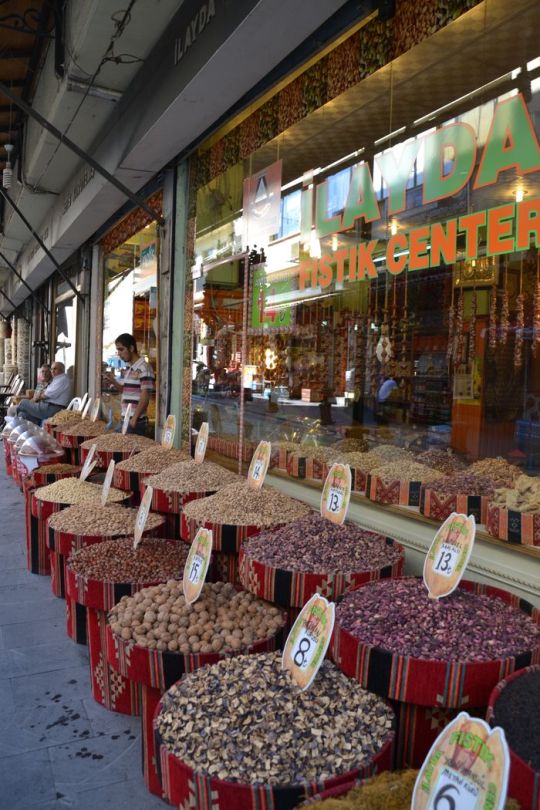
Marseilles and Rouen
It has thus increased exactly three and one half times. There is nothing abnormal in this. London in the same time has grown quite fourfold, and a similar rate of increase has been seen in Berlin, Vienna, St. Petersburg, Lyons, Marseilles, and Rouen.
The increase of many English centres of industry, and of nearly all the American, has been vastly greater and more rapid. Still, the increase of Paris, within a hundred years, of three or four times in population and five or six times in area, is a sufficiently striking fact. In 1789 there were about one thousand streets: there are now about four thousand. There were fifteen boulevards: there are now more than one hundred. The Invalidcs, the Luxembourg, the Bas-tille, the line of the inner boulevards, and the Place Venddme then marked the utmost limits of regular habitations; and thence the open country began. There were within the barriers immense spaces, gardens, and parks; but they were closed to the public. Paris which is now covered with gardens, parks, plantations, and open spaces was in 1789 singularly bare of any.
The Jardin des Plantes, the Jar din des Tuileries, were royal possessions; the Champs Elystes and the Palais Royal were favourite walks. But these were almost the only accessible promenades. Of some forty places of importance which Paris now possesses, few existed in 1789, except the Place de la Concorde, the Esplanade of the Invalides, the Cha77ip de Mars, the Place Ve7ido77ie, and the Place Royale (now des Vosges) private turkey tours. Within the circuit of the older city there was hardly a clear space, a plantation, a parterre, or a free walk, except in the Pa7′- vis de Notre Da7tie, the March des l7moce7its, and the Place de la G7’bve. From the Loire 7’c to the Hotel de Ville there lay a labyrinth of dark and tortuous lanes, such as we may still see in the Ghetto of Rome or round about the Canongate at Edinburgh.
Revolution came, the Convention
The change that has taken place is that of a dream, or a transformation in a theatre. The Revolution came, the Convention, the first Empire, the Orleans monarchy, and the third Empire — and all is new. Streets only too symmetrical, straight, and long; open spaces at the junction of all the principal streets, boulevards, avenues, gardens, fountains, have sprung by magic into the places so lately covered with labyrinthine alleys.
As we stand today in the Place dn Carrousel, in the Place de Voptra, du Theatre Franqais, du Chatelet, de la Bastille, des Innocents, St. Michel, St. Germain, Notre Dame, or de I’Hdtel de Ville, each radiant with imposing buildings, stately avenues, monuments, fountains, columns, and colonnades, with everything that modern architecture can devise of spacious, airy, and gay, it is hard indeed to understand how in so few years (and much of it within the memory of men still living) all this has been created over the ruins of the dense, dark, intricate streets of the last century, where lanes still followed the ramparts of Louis the Stout and Philip Augustus, where the remnants existed of chateaux built by mediaeval seigneurs, or during the civil wars of the fifteenth and sixteenth centuries.
The clearance has been most cruel of all ill the old City, the original Paris of the earliest ages. Down to the Revolution it had a population of about 20,000, which has now almost wholly disappeared, along with the sixteen churches, the oratories, and streets. The ancient island — Lutetia — is now occupied almost solely by six enormous public buildings; and the spot, which for eighteen centuries has been busy with the hum of a city life of intense activity and movement, is now covered only by a lonely but glorious cathedral, an enormous hospital, a huge barrack, courts, offices, and official buildings. The oldest bit of Paris, the oldest bit of city in all Northern Europe, now looks for the most part like a new quarter laid out on some vacant space. Notre Dame, the Sainte Chapelle, the Conciergerie, have been restored and furbished up till they almost might pass for modern buildings. The barrack, the hospital, the geometric streets, the open square, might do credit to Chicago.
0 notes
